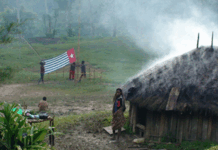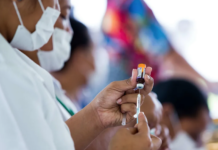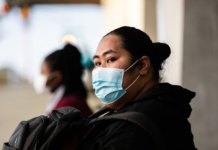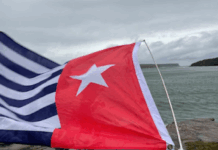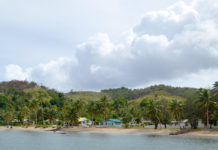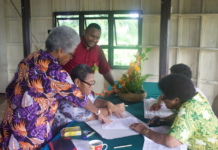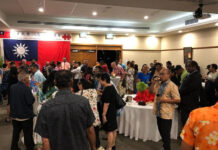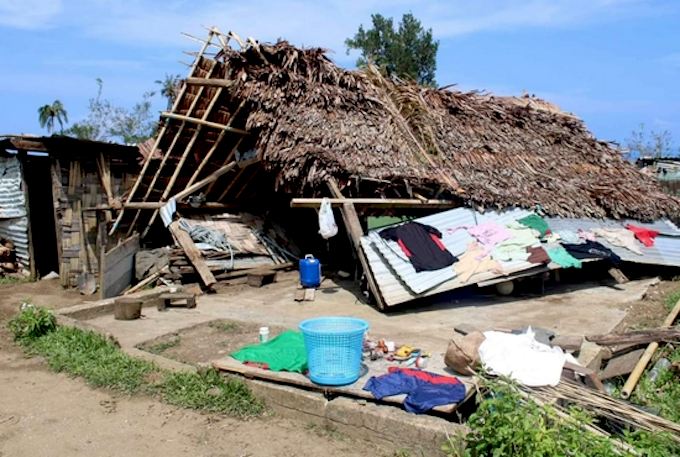
By Koroi Hawkins, RNZ Pacific editor, and Christina Persico, RNZ Pacific bulletin editor
Communities in Vanuatu are learning to grow climate resilient crops, 18 months after Cyclone Lola devastated the country.
The category 5 storm struck in October 2023, generating wind speeds of up to 215 kmph, which destroyed homes, schools, plantations, and left at least four people dead.
It was all the worse for following twin cyclones Judy and Kevin earlier that year.
- READ MORE: Govt finally getting food to Vanuatu cyclone victims
- Kava farmers in Vanuatu want govt assistance
- Other Vanuatu reports
Save the Children Vanuatu country director Polly Banks said they have been working alongside Vanuatu’s Ministry of Agriculture and local partners, supporting families through the Tropical Cyclone Lola Recovery Programme.
“It really affected backyard gardening and the communities across the areas affected – their ability to pursue an income and also their own nutritional needs,” she said.
She said the programme looked at the impact of the cyclone on backyard gardening and on people’s economic reliance on what they grow in their gardens, and developed a recovery plan to respond.
“We trained community members and also provided them with the equipment to establish cyclone resilient nurseries.
Ready for harsh weather
“So for example, nurseries that can be put up and then pulled down when a harsh weather event – including cyclones but even heavy rainfall — is arriving.
“There was a focus on these climate resilient nurseries, but also through that partnership with the Department of Agriculture, there was also a much stronger focus than we’ve had before on teaching community members climate smart agricultural techniques.”
Banks said these techniques included open pollinating seed and learning skills such as grassing; and another part of the project was introducing more variety into people’s diets.
She said out of the project has also come the first seed bank on Epi Island.
“That seed bank now has a ready supply of seeds, and the community are adding to that regularly, and they’re taking those seeds from really climate-resilient crops, so that they have a cyclone secure storage facility,” she said.
“The next time a cyclone happens — and we know that they’re going to become more ferocious and more frequent — the community are ready to replant the moment that the cyclone passes.
Setting up seed bank
“But in setting the seed bank up as well, the community have been taught how to select the most productive seeds, the seeds that show the most promise; how to dry them out; how to preserve them.”
Banks said they were also working with the Department of Agriculture in the delivery of a community-based climate resilience project, which is funded by the Green Climate Fund.
Rolled out across 282 communities across the country, a key focus of it is the creation of more climate-resilient backyard gardening, food preservation and climate resilient nurseries.
“We’re also setting up early warning systems through the provision of internet to really remote communities so that they have better access to more knowledge about when a big storm or a cyclone is approaching and what steps to take.
“But that particular project is still just a drop in the ocean in terms of the adaptation needs that communities have.”
This article is republished under a community partnership agreement with RNZ.








